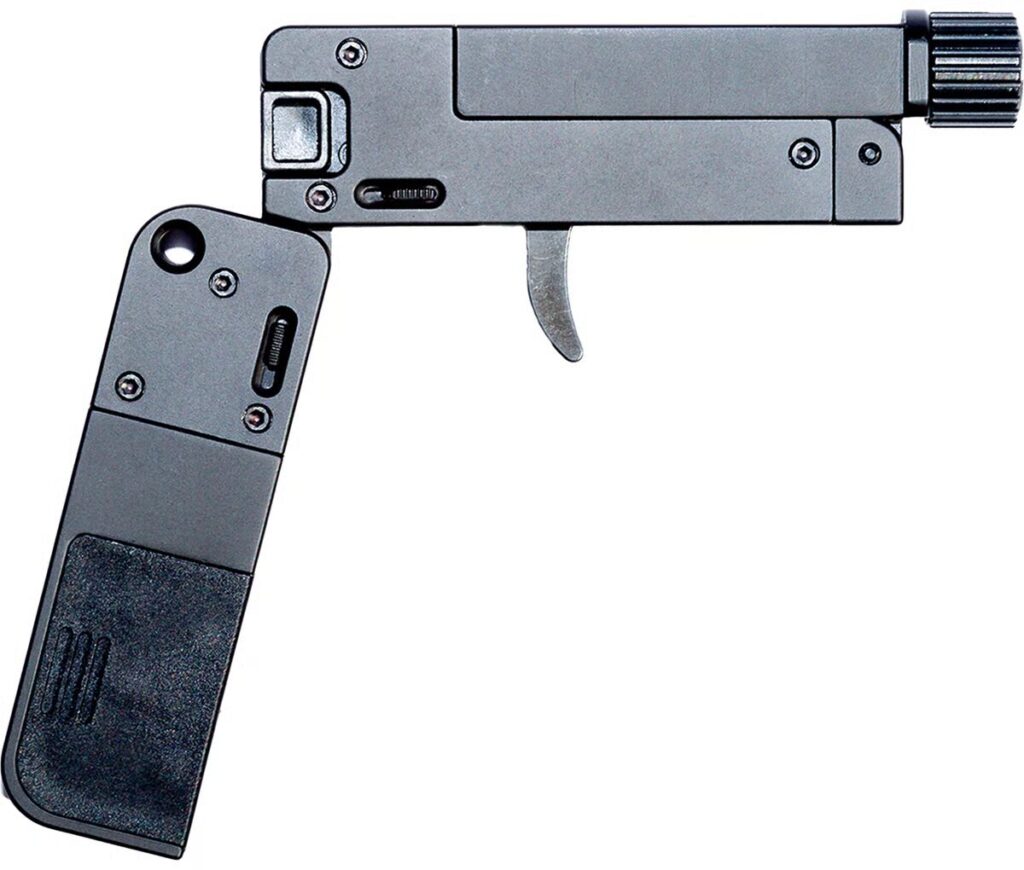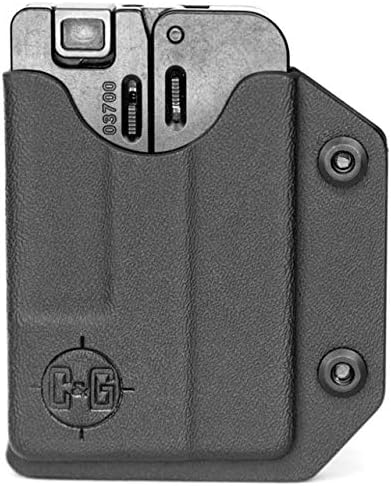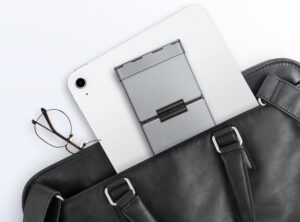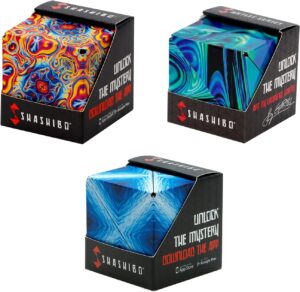Key Takeaways
- The LifeCard is an ultra-compact folding pistol that fits in a wallet when closed.
- It offers extreme concealability but has limited capacity and slow deployment.
- The .22 caliber firearm is well-constructed but lacks power compared to larger handguns.
- It’s best suited as a last-resort backup gun or for enthusiasts, not primary self-defense.
Ever feel like you’re bringing a knife to a gunfight when all you have in your pocket is a wallet? What if your credit card could convert into a concealable pistol in seconds?
With the rise in everyday concealed carry permits, compact and easily concealable handguns have exploded in popularity in recent years. But most still print or stand out in clothing. Enter the Trailblazer LifeCard.
The LifeCard stands out as an exceptionally slim, folding .22 LR or .22 WMR pistol designed to be tucked discreetly into a pocket or wallet. When folded, it is precisely the size of a credit card – 3.375″ x 2.125″ x 0.5″.
Originally launched in 2016, the LifeCard was created by Florida-based Trailblazer Firearms as an ultra-slim last resort self-defense pistol. Its ability to vanish into a wallet makes the LifeCard one of the most unique handguns on the market.
Table of Contents
LifeCard Specs and Features
The LifeCard folding pistol is offered in both .22 LR and .22 WMR calibers, providing buyers a choice of the rimfire round that suits their needs. For this review, we consider the .22 LR variant.
When fully collapsed, the pistol has a footprint identical to that of a credit card or debit card – it measures precisely 3.375” long x 2.125” wide x 0.5” thick. This ultra-slim wallet-sized footprint when folded makes the LifeCard incredibly easy to conceal and carry discreetly.
Despite its tiny size when folded, the LifeCard has a solid, quality feel in hand and does not feel flimsy or weak. The frame is CNC machined from a solid block of 7075 aluminum alloy, while the barrel and bolt are CNC machined from 4140 alloy steel and hardened to RC 40 for durability. Fit and finish throughout are excellent.
As expected from its incredibly slim design, it does not have iron sights or optics in the traditional sense. Instead, it utilizes a simple U-notch rear sight groove machined along the length of the frame top, paired with a front post sight integrated on top of the 2.5” barrel. The U-notch does provide a usable sight reference, but precise alignments are difficult.
In terms of capacity, the LifeCard holds only 1 round at a time in the chamber itself. However, the aluminum grip frame incorporates a built-in storage slot that can internally house an additional 3 rounds for backup ammunition that is quickly accessible.
Its operation uses two identical ambidextrous latches on the sides – one latch releases the grip to fold open, while the other latch releases the barrel to tilt up for loading. The bolt must be manually pulled back to cock the striker before firing.
There are no external manual safeties in the minimalist design. When folded closed, the trigger is contained securely within the frame, only becoming exposed when opened and ready to fire. This provides an elegant passive safety mechanism.
Shooting and Handling
Deploying the LifeCard from its folded state and firing the first shot takes practice and repetition. The ambidextrous release latches on each side need to be manipulated in the proper sequence to smoothly unfold the grip, tilt open the barrel, load a round into the chamber, and cock the bolt.
With sufficient dry fire practice at home, the LifeCard can be deployed from a pocket and deliver an aimed first shot in just under 5 seconds. While respectable for such a specialized folding pistol, that is still an eternity in life-or-death terms compared to simply drawing a traditional loaded pistol from a holster and immediately firing.
Here are the detailed steps required to effectively deploy and fire the LifeCard from its closed position:
- Draw the LifeCard from your pocket and orient it in your hand properly to manipulate the controls, keeping the muzzle pointed in a safe direction.
- Use your thumb to press the slide latch sideways and release the grip frame, as your support hand unfolds the grip downward into the firing position.
- With the support hand, press the barrel latch rearwards to tilt up the chamber for loading access.
- Insert a .22 LR cartridge directly into the open chamber then close the barrel back down into the locked position.
- With the shooting hand, grasp the bolt and pull it fully rearwards until it locks into the cocked position.
- Raise the LifeCard, align the U-notch rear sight on target, and place your finger on the trigger.
- Press the trigger straight back to fire the round.
Loading a follow-up shot involves repeating steps 3-5 above – tilting open the barrel again with the support hand, manually removing the spent case, inserting a fresh cartridge, closing the barrel, and cocking the bolt.
This reload procedure requires a minimum of 3-5 seconds in most hands. While slow, it does allow firing multiple shots if needed. The grip storage can provide access to spare ammunition more quickly than retrieving rounds from a pocket.
In terms of firing characteristics, the LifeCard is comfortable and controllable when using the proper grip technique. The minor .22 LR recoil impulse is easily managed. The short 2.5” barrel does produce a noticeable muzzle blast, making hearing protection mandatory for prolonged shooting.
At typical self-defense handgun distances of 5-7 yards, one can keep a majority of rounds in the effective torso zone of a target if the time to properly align the U-notch rear sight is taken. The LifeCard’s trigger is relatively light and crisp, aiding in precision.
Pushing out past 10 yards, the accuracy and bullet trajectory became less predictable and consistent. The short sight radius of less than 5 inches and lack of adjustable sights limit the LifeCard’s effective accuracy potential.
But for emergency close-quarters use, the LifeCard provides adequate accuracy to likely neutralize a threat. With proper training, it can serve as a last-ditch ultra-concealable defensive pistol option when deployed at extremely close distances of just a few yards.
Pros and Cons

Pros
- Extreme concealability. The LifeCard’s ultra-slim wallet-sized footprint when folded makes it disappear easily into a pocket or pouch.
- Very lightweight at 7 ounces. You’ll barely notice carrying the LifeCard compared to a full-size pistol.
- Quality machined construction. The aluminum and hardened steel build feels solid and durable for a lifetime of use.
- Reliable operation. The simple blowback action and quality machining deliver proven reliability.
- Built-in safety when folded. The trigger is fully contained in the grip channel when closed.
- Ambidextrous operation. All the latches and controls work smoothly left or right-handed.
- Made in USA. Designed, machined, and assembled completely in Florida.
- Affordable cost. With an MSRP of around $300, it’s competitively priced for a specialty folding pistol.
Cons
- Low .22 rimfire power. The .22 LR lacks ideal stopping power compared to centerfire calibers.
- Very low 1+3 round capacity. The single-round chamber and grip storage limit shots on hand.
- Challenging to deploy quickly. It takes practice to smoothly and swiftly manipulate the latches and bolt from the closed position.
- Hard to shoot accurately. The lack of sights and short barrels reduce practical accuracy past very close distances.
- Rimfire reliability variability. While normally reliable, rimfire rounds are inherently less consistent than centerfire.
- No extractor. Spent cases must be removed manually following each shot.
- Unorthodox grip ergonomics. The flat metal grip frame may not fit all hand sizes comfortably.
The LifeCard involves some tradeoffs to achieve its incredibly slim concealable size. But it achieves undeniable advantages in concealability and discreet carry not matched by any typical full-size or compact pistol.

Accessories and Customization
Given its unique folded size and shape, the LifeCard has few accessories designed specifically for it compared to full-size pistols with rail mounts and abundant aftermarket support. But you can enhance and customize a LifeCard’s carry and use with:
- Holsters – Companies like C&G Holsters offer several LifeCard holster fits including IWB, OWB, and pocket models to fit the folded and deployed sizes. A proper holster aids safe carry and deployment.
- Lanyards – A paracord lanyard attached to the grip or frame can aid in swiftly deploying the LifeCard from a pocket under stress. It also provides an extra grip point to control the tiny pistol.
- Pocket Carry Cases – The iconic Altoids small mint tin is perfectly sized to hold a LifeCard inside for added discretion. Leather pocket slipcases also work well.
- Extra Grip Frames – For faster reloads, an extra grip frame allows you to reload fresh ammunition more rapidly.
While not as abundant as full-size pistol options, these accessories allow owners to optimize their LifeCards for how they plan to carry and use them. The holster and lanyard aids in deployment are especially recommended.

Final Thoughts
Here’s a revised version of the paragraph:
The LifeCard is an exceptionally slim, compact folding pistol designed for deep concealment. Its innovative folding mechanism allows it to compress smaller than a wallet, making it easily concealable in pockets or pouches. While unconventional, the LifeCard offers a unique solution for those prioritizing discreet carry, serving as a potential last-resort option when a primary firearm is inaccessible. However, its limited capacity and slow deployment make it more suitable as a backup rather than a primary defensive tool. For firearm enthusiasts, the LifeCard also presents an intriguing novelty for range use, showcasing creative engineering in compact firearm design.




